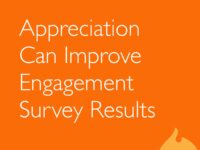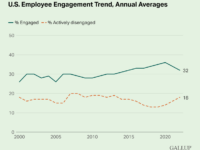The role digital communications play in the workplace is evolving thanks to a new kind of tool: the employee experience platform.
Workplace technology has traditionally occupied a broad, somewhat nebulously defined role in the form of productivity platforms. That is, tools designed to improve task performance and workflow management. But with the advent of social media and the wide-ranging changes that have come with it, organizations everywhere are re-evaluating technology’s utility in the workplace. Now, a tool we call an “employee experience platform” is being harnessed to address specialized engagement and culture needs.
An employee experience platform operates on the basis of two principles:
- Strong human relationships are at the heart of a highly-engaged workforce and strong culture.
- Digital communication is a fundamental part of how we all build and maintain relationships today.
An overwhelming body of evidence put forth by Gallup, Forbes, and Harvard Business Review supports these claims. It is a fact that human relationships are one of the primary drivers of employee engagement and, in case you need a reminder, social media has fundamentally transformed the way relationships form and develop.
Employers are beginning to realize that through digital interactions, they can help their employees discover relatedness—shared commonality—and build trust with one another. That sense of trust, in turn, forms the basis of the human relationships that yield a more engaged workforce.
Digital communication serves as the primary functionality of an employee experience platform. But don’t let this similarity with productivity platforms fool you. Other than the ability to share text, photo, and video content, they couldn’t be more different. And in today’s world, companies need both.
Related: What is Employee Experience
First, let’s define “productivity tools.”
Productivity platforms are designed to help you perform your work. With goals like “reducing email” and “reducing meetings,” these tools are important investments in optimizing workflow and getting work done through features like file sharing, video conferencing, instant messaging, and task management. These tools all have a mobile application, but are predominantly used by employees from their computer. Larger computers are of course far more adept at completing work—larger screen, keyboard, a mouse—they are well-equipped for optimizing output and efficiency.
Some productivity platforms have even developed meaningful specialization by industry type. For example, a tool like Salesforce can analyze retail customer data and convert it into insights used to develop physical and digital consumer engagement strategies.
Make no mistake, these are powerful resources to have in the workplace, and the utility they offer is only possible through recent advances in technology. Productivity platforms have dramatically changed the way organizations across the world operate, and we’re better off for it.
But the focus of these tools is on work performance, and not the experiences of the people performing work.
What is an employee experience platform?
Employee experience platforms create the dedicated digital space required to build the human relationships and the feelings of trust, belonging and appreciation required that are symptomatic of a highly engaged employee and strong culture.
While these platforms also feature digital communication, they are mobile-centric and take their cues from modern-day social network and communication platforms we use in our personal lives.
Even if you can’t articulate why, every social channel a person uses has its own purpose expressed through the type, frequency, and quality of content posted. Employee experience platforms are home to the same kind of deliberate, high-quality content that is part of the fabric of human relationships today—rich media heavy, mobile-centric, real-time, etc.
Employee experience platforms are designed to support the investments companies are already making in relationships and culture, like internal communications, employee feedback, employee recognition, diversity and inclusion, philanthropy, and events. And, perhaps most importantly, offer a new kind of people intelligence—one that helps companies go beyond adoption and understand the impact of their people investments and begin to correlate it to the bottom-line through retention and performance outputs.
Why you need an employee experience platform and productivity tools
The employee experience platform occupies a unique space that makes it inherently valuable: an environment in between the standard communication tools we use at work and the platforms we use in our private lives.
These tools enable employees to share expressive digital social interactions with each other without having to disrupt spaces reserved for work-oriented tasks, or bringing colleagues into their private social media. It’s an arena that functions as a digital extension of company culture, where employees can reach out beyond the immediate constellation of their coworkers and connect with colleagues all across an organization.
For whatever similarities exist in productivity tools’ chat and photo sharing features, they still have a task-oriented center of gravity. For that reason, they are unlikely to help you feel connected to company culture, nor are they likely to encourage employees to share expressive content they can form relationships over.
Despite their undeniable utility and value, productivity platforms simply don’t address the material need we feel for expressive digital social environments in our work lives. It’s why you need an employee experience platform deployed alongside the tools employees . To bring out the best in your workforce, you need to make smart use of both.



 4 min
4 min




